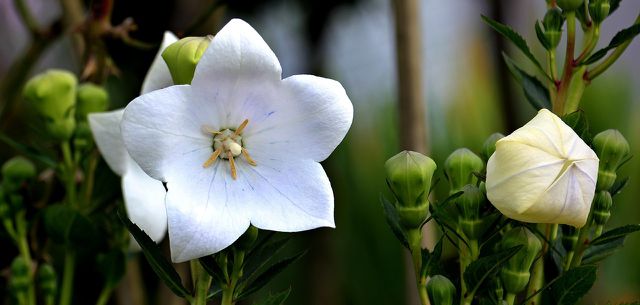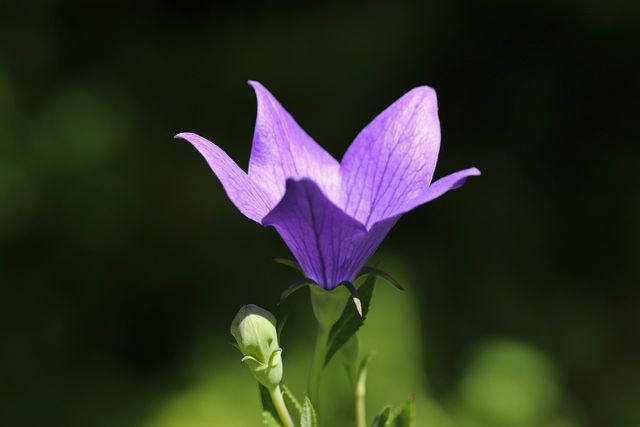
In late summer, balloon flowers add another splash of color to the flower bed. We show you how to grow and care for the ornamental plant correctly.
You can buy balloon flowers from August at the latest in any garden center – regardless of whether they have purple, white or pink blossoms. There is only one type of the perennial plant with different cultivars, some of which are even hardy. Originally, balloon flowers come from China, Eastern Siberia and Japan. However, if you follow the tips below, the plant will also feel at home in your garden.
Contents
How to plant balloon flowers correctly

Balloon flowers can be used in many ways, either as a balcony plant, in a perennial bed or in a rock garden. They are a bit more demanding than other ornamental plants, but if you provide ideal conditions in your garden, balloon flowers can quickly grow up to 70 inches tall:
- The right location: Choose the location for balloon flowers very carefully, because they usually do not tolerate being moved again later. It’s best to find them a sunny to semi-shady spot, which should ideally also be well protected from wind and rain.
- The right soil: the more calcareous and nutrient-rich the soil, the better balloon flowers will thrive. Therefore, you should always lift some compost under the soil when planting the young plants. The balloon flower does not tolerate waterlogging. Mix some sand into the soil to make it more permeable to rainwater.
- The perfect time: Although seedlings are often on sale in the fall, it’s best to plant balloon flowers in the spring.
- Planting tips: Make sure you leave a space of at least 30 inches between each plant. Since balloon flowers develop very deep tap roots, you should dig the planting hole as deep as possible. Water the plant well after you have planted it in the ground.
- Tip: If you want to grow balloon flowers together with other ornamental plants, daisies, ragwort and sage are the best choices.
Balloon flowers: proper care

To ensure that you can enjoy these colorful balloon flowers for as long as possible, be sure to follow some care instructions:
- Watering: Make sure that the soil of the balloon flowers does not dry out by watering them regularly. Especially the young shoots should be watered daily with rainwater. However, be careful not to create waterlogging, as this will cause the roots to rot.
- Fertilize: The best time to fertilize balloon flowers is in the spring, when they sprout. You can use compost or rotted autumn leaves for this purpose.
- Pruning: If you regularly remove the withered flowers of the balloon flowers, you can encourage them to sprout again. At the end of the flowering period, you should cut the plant back to just above the ground. As a rule, balloon flowers do not need any further protection for the winter, but you can cover young plants with some brushwood.
- Pests: Especially the young shoots of balloon flowers are very susceptible to slugs. A slug fence is the best way to protect the individual plants from them. If you spread coffee grounds around the young plants, you can also keep the pests away and provide natural fertilizer at the same time.
Balloon flowers propagate

You can propagate the balloon flowers in two different ways:
Seeds: In autumn the seed capsules of the balloon flowers open. Now you can easily collect the seeds and sow them again in spring. To do this, press the seeds only lightly and do not cover them with soil, as they need sunlight to germinate.
Divide rootstock: When your plant is three or four years old, you can carefully divide the rootstock with a spade and replant the sections.

